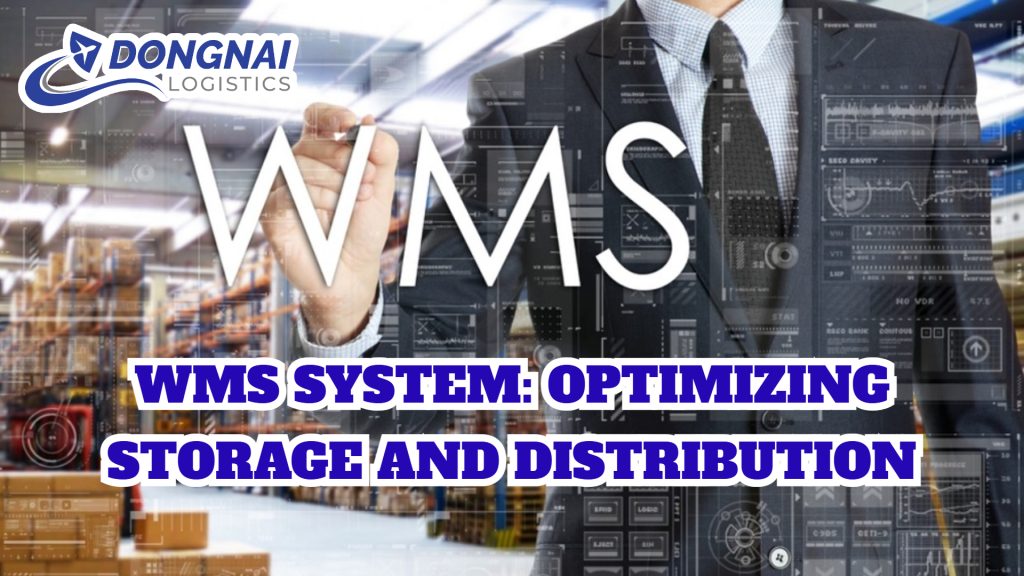WAREHOUSE MANAGEMENT SYSTEM (WMS): ENHANCING STORAGE AND DISTRIBUTION EFFICIENCY
In today’s digital landscape, warehouse management goes far beyond traditional inventory checks and manual record-keeping. Businesses are increasingly turning to smart technologies to stay competitive, and one of the most critical tools in modern logistics is the Warehouse Management System (WMS). WMS is not just software—it’s a comprehensive solution that optimizes storage, enhances inventory accuracy, speeds up distribution, and reduces human error.
This article provides an in-depth look at what a WMS is, how it works, its key features, the advantages it offers businesses, and where this technology is headed in the future.

What is a WMS System?
A Warehouse Management System is a software solution or digital platform designed to help businesses efficiently manage and control various warehouse operations. These operations include receiving goods, putting away products, inventory tracking, picking and packing orders, and finally, shipping them out.
Through automation and integration, a WMS helps companies improve visibility, reduce operational costs, and make informed decisions in real-time. It also acts as a central hub that connects with other systems like ERP (Enterprise Resource Planning), TMS (Transport Management System), and CRM (Customer Relationship Management) to ensure seamless supply chain coordination.
Key Functions of a WMS System
-
Storage Location Management
WMS allocates goods to optimal positions within the warehouse using a virtual layout. The system analyzes factors like item size, weight, dispatch frequency, and other relevant criteria to assign the most suitable storage locations.
-
Real-Time Inventory Control
With integrated barcode, RFID, or IoT technology, WMS allows staff to check inventory levels in real time. This reduces discrepancies between physical stock and system records.
-
Optimizing Inbound and Outbound Processes
The system suggests the shortest travel paths within the warehouse, assigns tasks efficiently, and processes orders based on FIFO (First-In-First-Out) or FEFO (First-Expired-First-Out) principles depending on product characteristics.
-
Inventory Auditing and Reporting Support
Manual inventory checks are time-consuming and error-prone. WMS automatically logs and analyzes all activities, providing instant reports for accurate warehouse insights.
-
Integration with Other Supply Chain Systems
WMS can link with ERP, CRM, and TMS (Transport Management System) platforms to synchronize data, ensuring smooth and precise order placement, delivery, and inventory management.
Benefits of Implementing a WMS System
-
Optimized Storage Space
WMS uses algorithms to determine the best storage locations, avoiding improper placement or clutter. This saves warehouse space and reduces rental costs.
-
Improved Labor Efficiency
Warehouse staff follow automated workflows and no longer need to search for goods manually, which saves time and increases accuracy.
-
Higher Order Fulfillment Accuracy
With barcode checks, software validation, and inventory reconciliation, WMS minimizes wrong or incomplete deliveries, improving customer satisfaction.
-
Reduced Overstocking or Shortages
Continuously updated inventory data allows businesses to make timely decisions on stocking, avoiding overstock or out-of-stock situations during peak seasons.
-
Supports Business Scalability
Thanks to its flexible technology foundation, WMS allows businesses to expand warehouse networks, branches, or distribution units without lacking suitable management systems.

Who Should Use a WMS System?
-
Omnichannel Retailers:
Companies operating online stores, physical outlets, and e-commerce marketplaces benefit from a centralized system to manage thousands of SKUs across multiple platforms.
-
Logistics Companies and 3PL Providers:
These providers handle inventory and shipments for other businesses. A WMS ensures accuracy, transparency, and efficiency in managing multiple clients’ inventory in shared warehouses.
-
Manufacturers:
From raw materials to finished goods, manufacturers deal with complex supply chains. A WMS helps monitor stock levels, streamline production inputs, and manage final product storage and shipping.
-
International Distributors:
Firms distributing goods across borders require precise inventory tracking, multilingual support, and regional compliance. A WMS enables real-time coordination between warehouses in different regions.
Future Trends of WMS System
-
Integration of Artificial Intelligence (AI)
Artificial Intelligence enables predictive analytics for demand forecasting, space utilization, and workforce planning. AI can also detect anomalies in operations and suggest corrections before issues escalate.
-
Use of Robots and Automation
WMS works with robots, conveyors, and inventory drones to create an automated warehouse coordination hub.
-
Cloud-Based WMS Models
Robotic arms, autonomous mobile robots (AMRs), drones, and automated conveyors are being increasingly integrated into WMS platforms. These technologies accelerate order picking, inventory scanning, and product transport inside the warehouse.
-
Data Security
Data integrity and security are paramount. WMS platforms now offer multi-layer encryption, role-based access control, and audit trails, ensuring that sensitive data is protected and traceable.
WMS SYSTEM: OPTIMIZING STORAGE AND DISTRIBUTION
Adopting a WMS is more than a technological upgrade—it’s a strategic investment in the future of logistics. From real-time inventory tracking to intelligent distribution, WMS enhances operational transparency, improves customer satisfaction, and supports sustainable business growth.
As supply chains become more complex and customer expectations continue to rise, a robust and adaptive Warehouse Management System will be the backbone of any competitive logistics operation.
Read more:
Vận tải biển: Xương sống của chuỗi cung ứng toàn cầu
Vải Vận Chuyển Từ Đồng Nai Sang Phần Lan Bằng Đường Biển
Vận chuyển hàng hóa từ Đồng Nai đi Phú Quốc
Chuyển phát nhanh từ Quảng Ninh đến Đồng Nai chất lượng, uy tín, giá cạnh tranh

